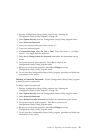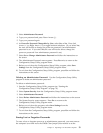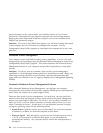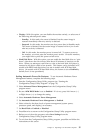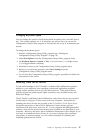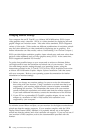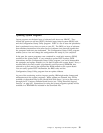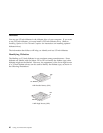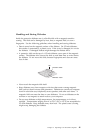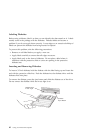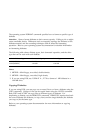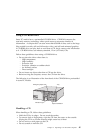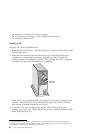
Updating System Programs
System programs are the basic layer of software built into every IBM PC. They
include the power-on self-test (POST), the basic input/output system (BIOS) code,
and the Configuration/Setup Utility program. POST is a set of tests and procedures
that is performed every time you turn on your PC. The BIOS is a layer of software
that translates instructions from other layers of software into electrical signals that
the computer hardware can understand. The Configuration/Setup Utility program
enables you to view and change the configuration and setup of your computer.
In the past, the system programs were contained in a read-only memory (ROM)
module on the system board. If you wanted to update POST routines, BIOS
instructions, and the Configuration/Setup Utility program, you had to disassemble
the computer and replace modules, or you had to replace the system board. Now, a
module called electrically erasable programmable read-only memory (EEPROM, also
referred to as flash memory) has replaced the ROM module on the system board.
You can easily update POST information, the BIOS code, and the
Configuration/Setup Utility program from an update diskette.
As part of the continuing work to improve quality, IBM might make changes and
enhancements to the system programs. When updates are released, they will be
available via download files on the World Wide Web (http://www.pc.ibm.com) or
through the PC Company Bulletin Board Service (see “Using Electronic Support
Services” on page 99). Instructions for using the system programs updates will be
available in a README file included in the download files.
Chapter 3. Operating Your Personal Computer 39



